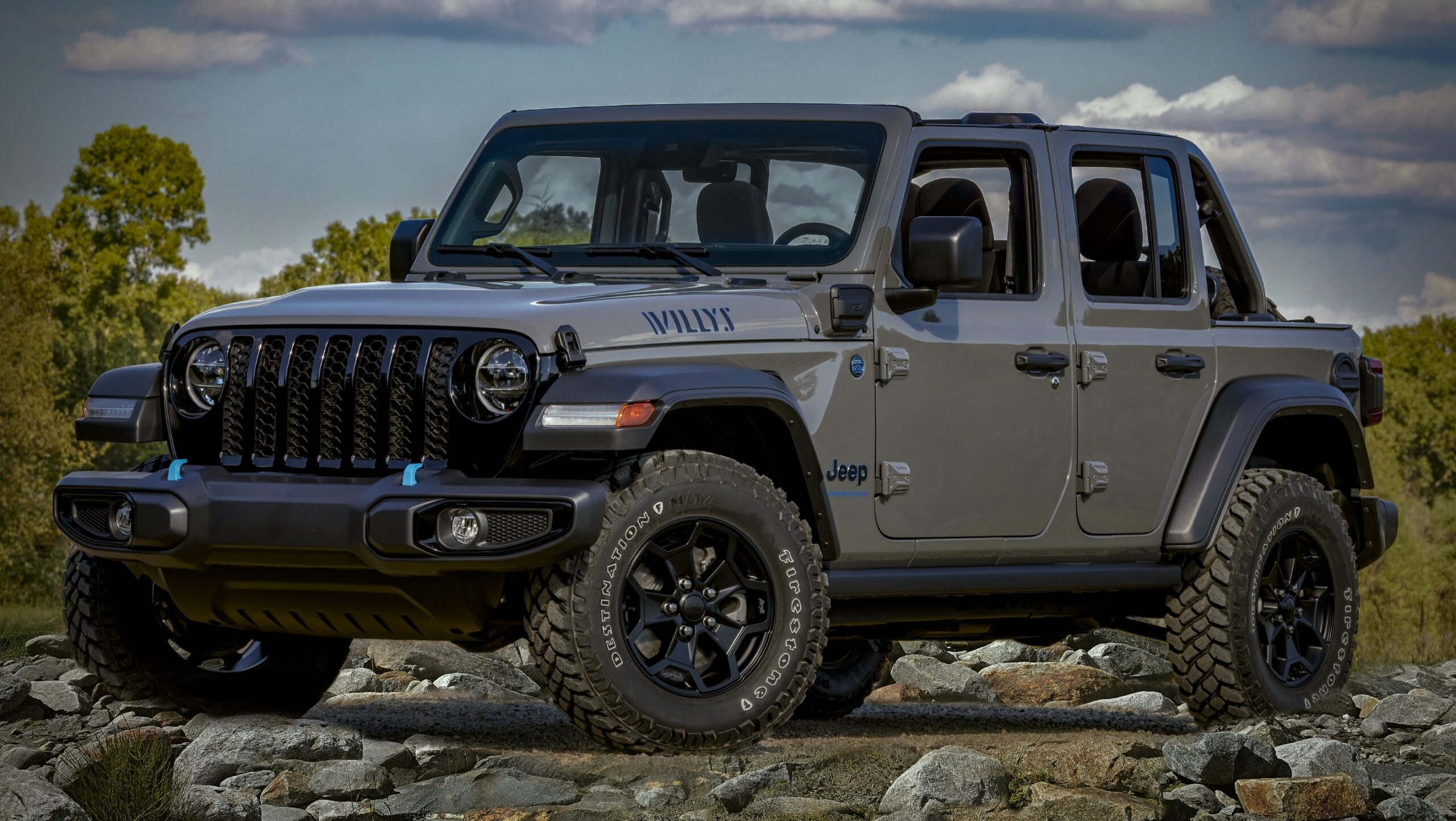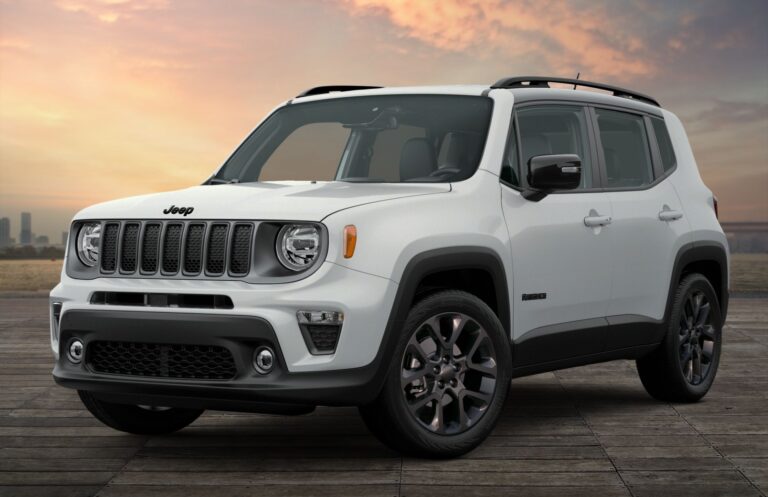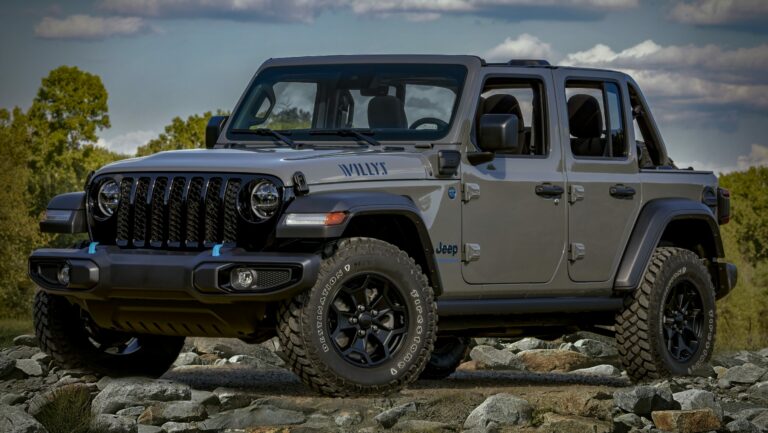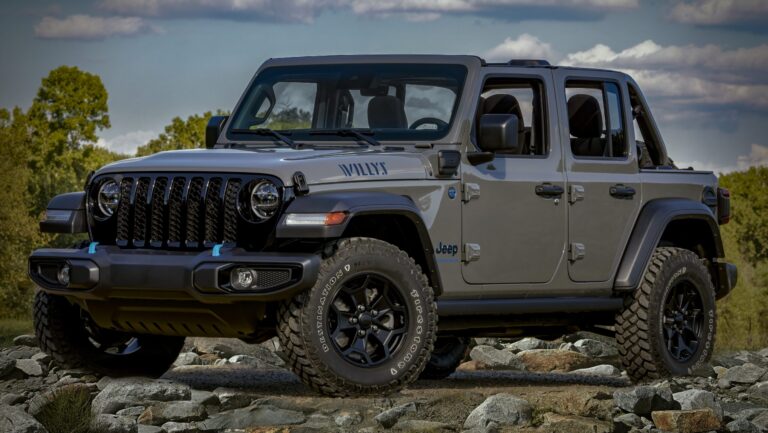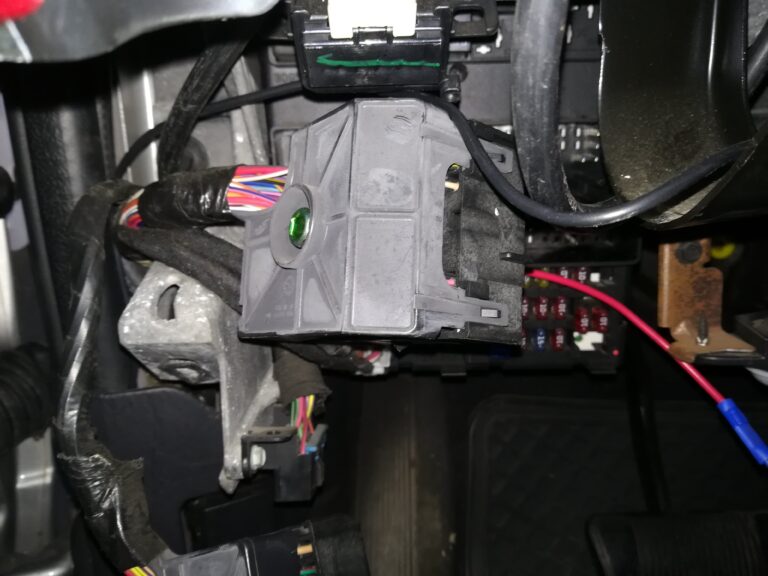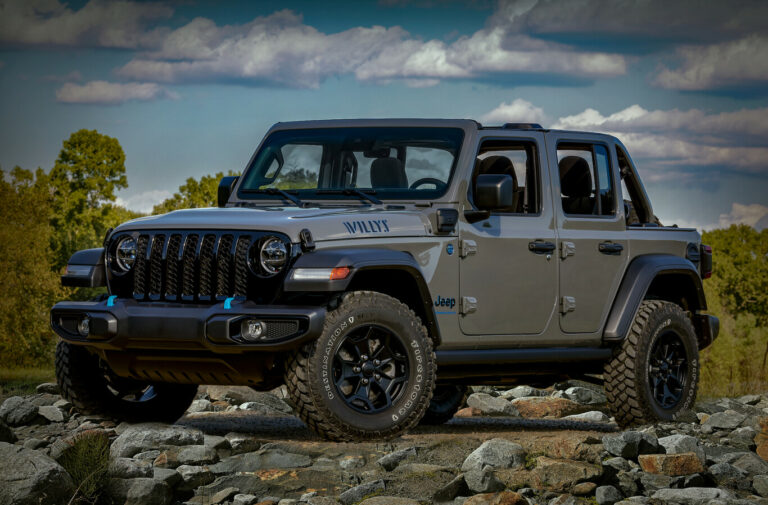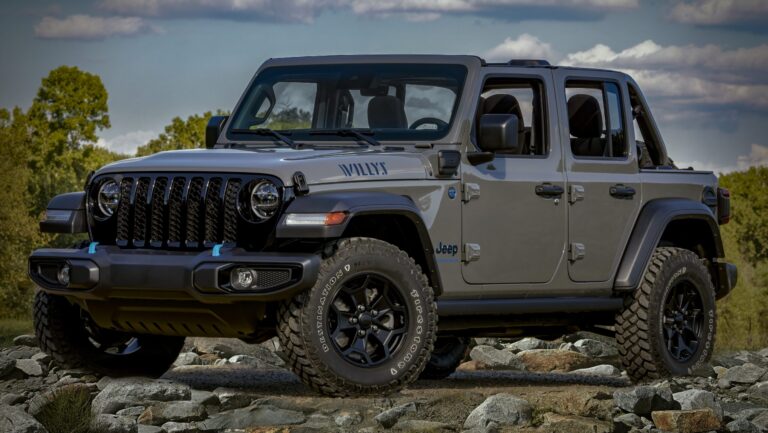Jeep Truck Conversion Kit For Sale: Unleash the Ultimate Adventure Rig
Jeep Truck Conversion Kit For Sale: Unleash the Ultimate Adventure Rig /jeeps.truckstrend.com
The iconic Jeep Wrangler has long been synonymous with unparalleled off-road capability, open-air freedom, and a spirit of adventure. However, for many enthusiasts, the one missing piece has been the practicality of a truck bed. Enter the Jeep Truck Conversion Kit For Sale – a revolutionary solution that transforms your beloved Wrangler into a versatile, go-anywhere pickup, blending the legendary prowess of a Jeep with the utility of a truck. This isn’t just about adding a bed; it’s about redefining your vehicle’s potential, creating a truly unique and highly functional machine that stands out on the trails and on the street.
These conversion kits cater to a growing demand for a more adaptable Jeep, offering a compelling alternative to buying a dedicated pickup or even a factory Jeep Gladiator. Whether you’re an avid overlander needing more cargo space, a weekend warrior hauling gear, or simply someone who craves a distinctive and capable vehicle, a truck conversion kit can turn your vision into a reality. This comprehensive guide will explore everything you need to know about these exciting kits, from their components and benefits to the intricate conversion process and crucial considerations.
Jeep Truck Conversion Kit For Sale: Unleash the Ultimate Adventure Rig
Understanding the Jeep Truck Conversion Kit
At its core, a Jeep Truck Conversion Kit is a specialized aftermarket package designed to modify the rear section of a Jeep Wrangler, converting it from an SUV or two-door variant into a full-fledged pickup truck. While the factory-produced Jeep Gladiator (JT) now offers a truck option, these conversion kits allow owners of previous generation Wranglers (JK and JL models) to achieve a similar, often more customized, result without purchasing an entirely new vehicle.
A typical full conversion kit usually comprises several key components:
- Frame Extension: This is the most critical structural component. The Wrangler’s frame is cut behind the rear axle, and a robust extension piece is welded in place to accommodate the new truck bed and increase the vehicle’s overall length. Professional welding and engineering are paramount here.
- Cab Enclosure: Depending on the kit, this might involve modifying the existing rear section of the Wrangler’s body to create a sealed rear cab wall, or providing a new panel that seamlessly integrates with the front cabin, effectively turning the SUV’s rear passenger area into the back of a truck cab.
- Truck Bed: This is the centerpiece of the conversion. Kits offer various bed designs, materials (steel, aluminum, fiberglass), and lengths, often resembling a compact pickup bed tailored to the Jeep’s aesthetics.
- Mounting Hardware & Brackets: Essential for securely attaching the new components to the extended frame and body.
- Fuel Tank Relocation/Modification Kit: The original fuel tank often needs to be relocated or replaced to clear space for the new frame and bed.
- Driveline & Wiring Extensions: Lengthened driveshafts, brake lines, and wiring harnesses are necessary to accommodate the increased wheelbase.
- Optional Components: Some kits might include revised rear suspension components, new bumpers, or fender flares to complete the truck look.

The appeal of these kits lies in their ability to marry the legendary off-road capability and iconic styling of a Jeep Wrangler with the undeniable utility of a pickup truck. It’s a bespoke solution for those who want more than just a standard SUV or a mass-produced truck.

The Undeniable Benefits of a Jeep Truck Conversion
Opting for a truck conversion kit offers a unique set of advantages for the discerning Jeep owner:
- Unrivaled Utility & Off-Road Prowess: The primary benefit is gaining significant cargo capacity. Whether you’re hauling camping gear, recovery equipment, lumber, or even a dirt bike, a truck bed vastly expands the utility of your Jeep. Crucially, this added functionality comes without sacrificing the Wrangler’s legendary ground clearance, articulation, and 4×4 capabilities. You get a true go-anywhere vehicle that can also work.
- Distinctive and Personalized Appearance: A converted Jeep truck is a head-turner. It stands out not only from stock Wranglers but also from factory Gladiators, offering a truly custom aesthetic. You get to define its look, from the bed style to the overall stance, creating a vehicle that reflects your individual taste and needs.
- Cost-Effectiveness (Potentially): While not inexpensive, a high-quality conversion kit and professional installation can often be more cost-effective than purchasing a brand-new Jeep Gladiator or a similarly equipped full-size pickup truck, especially if you already own a suitable donor Wrangler. This allows you to leverage your existing investment.
- Retain the Jeep Identity: Unlike buying a completely different truck, a conversion kit allows you to maintain the core identity, feel, and the cherished removable top/doors experience of your Jeep Wrangler. You’re enhancing, not replacing, the essence of what makes a Jeep, a Jeep.
- Customization Beyond Limits: These kits serve as a fantastic foundation for further customization. With a truck bed, you open up possibilities for custom storage solutions, integrated toolboxes, bed racks for tents or equipment, and more, tailoring the vehicle precisely to your adventurous lifestyle.
![]()
Types of Jeep Truck Conversion Kits
Conversion kits are not one-size-fits-all. They vary based on the donor vehicle and the extent of the conversion:
- Donor Vehicle Compatibility:
- Jeep JK Wrangler (2007-2018): These are very popular platforms for conversion, with kits available for both 2-door and 4-door models. The 4-door JK Unlimited often provides a more balanced wheelbase for a truck conversion.
- Jeep JL Wrangler (2018-Present): While the JL already has a factory truck variant (the Gladiator), conversion kits still exist for those who prefer to convert a non-Gladiator JL or desire a specific bed configuration not offered by the factory.
- Conversion Extent:
- Full Frame & Body Kits: These are the most comprehensive, involving frame cutting and extension, new cab back, and a full truck bed. They offer the most authentic truck appearance and utility.
- Bed-Only Kits (Less Common for Full Conversions): Some kits might focus solely on adding a bed, often requiring significant custom fabrication for the cab and frame. Most reputable "truck conversion" kits are full solutions.
- Materials: Kits are typically constructed from robust materials like steel for structural components, and steel, aluminum, or fiberglass for the truck bed, each offering different benefits in terms of weight, durability, and cost.
Key Considerations Before Purchasing and Converting
Embarking on a Jeep truck conversion is a significant undertaking. Careful planning and consideration are paramount:
- Budget Beyond the Kit: The kit price is just the beginning. Factor in professional installation costs (which can equal or exceed the kit price), paint, suspension upgrades (to handle the new weight distribution and longer wheelbase), larger tires, and any unforeseen expenses. Create a detailed budget and add a contingency fund.
- Donor Vehicle Condition: A solid, rust-free donor Wrangler is crucial. Any existing frame damage or significant rust will complicate the conversion and compromise safety. A well-maintained vehicle will yield the best results.
- Legal & Regulatory Compliance: This is perhaps the most critical consideration. Vehicle modification laws vary significantly by state and country. Research your local Department of Motor Vehicles (DMV) regulations regarding modified vehicles, frame alterations, vehicle titling, weight classifications, and safety inspections before you purchase a kit. Some states may require special inspections or re-titling as a "reconstructed" vehicle.
- Skill Level & Installation: This is not a beginner-level DIY project. It involves precision cutting, welding, fabrication, and extensive mechanical and electrical work. If you don’t possess advanced fabrication skills and the necessary tools (welder, lift, etc.), professional installation by a reputable shop specializing in custom vehicle builds is highly recommended. Cutting corners on structural modifications can lead to dangerous outcomes.
- Intended Use: How will you use your converted Jeep? This will influence kit choice, bed material, and additional modifications. A dedicated off-road rig might prioritize durability and clearance, while a daily driver might focus on aesthetics and ease of use.
- Resale Value: While a custom build is unique, it appeals to a niche market. Resale can be more challenging than a stock vehicle, and you may not recoup your full investment.
- Warranty Void: Be aware that performing a truck conversion will undoubtedly void the factory warranty on your donor Jeep.
The Conversion Process: A General Guide
While specific steps vary by kit and installer, the general process for a full Jeep truck conversion typically involves:
- Preparation: Thorough cleaning of the donor vehicle, removal of the hardtop/soft top, rear seats, carpet, and any components from the rear cargo area.
- Disassembly: Carefully removing the entire rear body tub from behind the front seats, including the roll cage section, rear fenders, fuel tank, exhaust, and any associated wiring and brake lines.
- Frame Modification: The most critical step. The Wrangler’s frame rails are precisely cut behind the rear axle. The new frame extension sections are then meticulously aligned, jigged, and professionally welded into place. Reinforcement plates are often added for structural integrity.
- Component Relocation/Extension: The fuel tank is typically relocated to a new position under the bed. Driveshafts are lengthened, and new, longer brake lines and wiring harnesses are run to accommodate the extended wheelbase.
- Cab Back Installation: The new cab wall or enclosure is fitted and securely mounted, sealed, and prepared for bodywork.
- Truck Bed Installation: The new truck bed is carefully hoisted and bolted to the extended frame. Alignment is crucial for proper aesthetics and functionality.
- Finishing Touches: This includes bodywork (sanding, filling seams), painting to match the rest of the vehicle, reinstalling interior components, and wiring up the tail lights and other electrical systems.
- Suspension & Drivetrain Review: It’s often recommended to upgrade the rear suspension to handle the increased weight and different weight distribution. A re-gear might also be considered if significantly larger tires are planned.
- Testing & Inspection: After completion, the vehicle must be thoroughly inspected for safety, structural integrity, and proper functionality of all systems before being driven on public roads.
Challenges and Solutions
- Challenge: High Complexity & Required Skills.
- Solution: Budget for professional installation by a highly reputable shop with experience in frame modifications and custom fabrication. Don’t attempt this without significant expertise.
- Challenge: Unforeseen Costs & Budget Overruns.
- Solution: Create an extremely detailed budget, including every component, labor hour, paint, and potential upgrades. Add a 20-30% contingency fund for unexpected issues.
- Challenge: Legal & Titling Hurdles.
- Solution: THOROUGHLY research your local state/province/country’s laws before starting the project. Consult with your local DMV and potentially a lawyer specializing in vehicle modifications. Get everything in writing.
- Challenge: Vehicle Downtime.
- Solution: Plan for your vehicle to be out of commission for several weeks to several months, depending on the installer’s schedule and the complexity of the kit. Have alternative transportation arranged.
- Challenge: Structural Integrity & Safety Concerns.
- Solution: Always prioritize safety. Ensure all welding is performed by certified welders, and all structural components meet or exceed industry standards. Never compromise on material quality or professional workmanship.
Tips for a Successful Conversion
- Choose a Reputable Kit Manufacturer: Research different brands, read reviews, and look for companies with a proven track record and excellent customer support.
- Find an Experienced Installer: If not DIY, select a shop that specializes in custom fabrication and has demonstrable experience with Jeep conversions or similar frame modifications. Ask for references and see their previous work.
- Plan Your Build Thoroughly: Decide on your exact needs and desired outcome before purchasing anything. Consider the type of bed, any integrated storage, and future accessories.
- Don’t Skimp on Quality: Invest in a high-quality kit and professional labor. This is a significant structural modification, and compromising on quality can lead to safety issues and costly repairs down the line.
- Document Everything: Take photos and videos of the entire conversion process. This can be helpful for future maintenance, showing off your build, and potentially for legal/insurance purposes.
- Consider Suspension Upgrades: The added weight and altered weight distribution from the bed and frame extension will necessitate proper suspension tuning or upgrades to maintain ride quality, handling, and load capacity.
Jeep Truck Conversion Kit Estimated Pricing Guide
The cost of a Jeep Truck Conversion Kit can vary widely based on the donor vehicle (JK vs. JL), the manufacturer, the completeness of the kit, and the materials used. The table below provides estimated ranges for typical conversion scenarios. These prices are for the kit only and do not include installation, paint, or other necessary components (like suspension upgrades, tires, etc.).
| Kit Type / Donor Vehicle | Key Components Included (Typical) | Estimated Kit Price Range (USD) | Estimated Professional Installation Cost (USD) | Total Estimated Project Cost (USD) |
|---|---|---|---|---|
| JK 2-Door Full Conversion | Frame Extension, Cab Back, Truck Bed, Mounting Hardware, Fuel Tank Relocation, Driveline Adapters | $6,000 – $12,000 | $4,000 – $8,000 | $10,000 – $20,000+ |
| JK 4-Door Full Conversion | Frame Extension, Cab Back, Truck Bed, Mounting Hardware, Fuel Tank Relocation, Driveline Adapters | $7,000 – $15,000 | $5,000 – $10,000 | $12,000 – $25,000+ |
| JL 4-Door Full Conversion | Frame Extension, Cab Back, Truck Bed, Mounting Hardware, Fuel Tank Relocation, Driveline Adapters | $8,000 – $18,000 | $6,000 – $12,000 | $14,000 – $30,000+ |
| DIY / Basic Kit (Less Components) | Frame Extension, Basic Bed Shell (requires more fabrication) | $3,000 – $7,000 | N/A (Assumes DIY expert) | Varies Wildly (Parts + Time) |
Note: These are rough estimates. Prices can fluctuate significantly due to market conditions, material costs, brand reputation, and regional labor rates. Always obtain detailed quotes from kit manufacturers and installers. Remember to budget for paint, bodywork, potential suspension upgrades, and new tires, which can add several thousands of dollars to the total.
Frequently Asked Questions (FAQ)
Q1: Is a Jeep truck conversion legal in my state/country?
A1: Laws vary significantly. It is crucial to research your local Department of Motor Vehicles (DMV) or equivalent agency’s regulations regarding vehicle modifications, frame alterations, and titling before starting the project. Some states may require special inspections or re-titling.
Q2: How long does a typical conversion take?
A2: The duration depends on the complexity of the kit, the skill of the installer, and the shop’s workload. Professional installations can take anywhere from 4-8 weeks, potentially longer for highly customized builds or if unforeseen issues arise.
Q3: Can I perform the conversion myself?
A3: Only if you possess advanced mechanical skills, professional-level welding and fabrication expertise, and access to specialized tools and equipment (like a vehicle lift and frame jigs). For most individuals, professional installation is strongly recommended for safety and quality.
Q4: Does a truck conversion affect the Jeep’s off-road capability?
A4: Yes, it can. The extended wheelbase will generally improve stability but increase the breakover angle, making it more prone to high-centering on certain obstacles. The added weight also impacts performance. However, with proper suspension tuning and driver awareness, a converted Jeep truck remains highly capable off-road.
Q5: Will converting my Jeep void its warranty?
A5: Yes, performing significant structural modifications like a truck conversion will almost certainly void any remaining factory warranty on your donor vehicle.
Q6: What’s the biggest challenge in a Jeep truck conversion?
A6: The biggest challenges are often the complexity of the structural modifications (especially frame cutting and welding), ensuring legal compliance, and managing the overall project budget, as hidden costs can quickly add up.
Q7: What Jeep models are compatible with these kits?
A7: The most common donor vehicles are the Jeep JK Wrangler (2007-2018), particularly the 4-door JK Unlimited, and increasingly, the Jeep JL Wrangler (2018-present).
Conclusion
A Jeep truck conversion kit offers an exciting pathway to transforming your Wrangler into a truly unique and highly functional adventure machine. It’s a testament to ingenuity and a desire for a vehicle that perfectly blends the go-anywhere spirit of a Jeep with the undeniable utility of a pickup. While the process is not for the faint of heart, requiring significant planning, investment, and often professional expertise, the reward is a custom-built rig that stands apart from the crowd.
For those seeking to expand their Jeep’s capabilities beyond the traditional SUV format, a truck conversion kit represents an unparalleled opportunity. By carefully considering all aspects – from legal requirements and budget to selecting the right kit and installer – you can embark on a rewarding journey that results in the ultimate expression of your off-road and utilitarian needs: a personalized Jeep truck that’s ready for any adventure you can throw at it.

